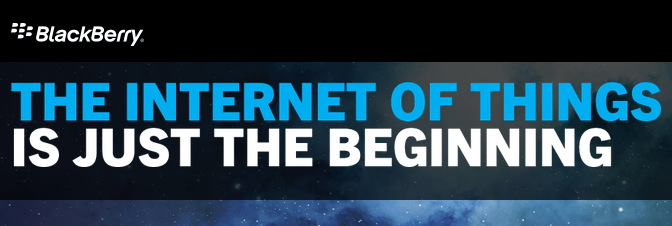BlackBerry is mostly discussed in terms of its slow decline in the global smartphone market, which it once pioneered. But it acquired QNX in 2010, and that would provide the basis not only for its BlackBerry 10 smartphone operating system, but also for the platform underlying a huge percentage of in-car infotainment systems. BlackBerry envisioned QNX extending to a still-wider range of devices to underpin the growth of the Internet of Things, and now it’s formalizing those efforts under its newly announced Project Ion.
Project Ion consists of multiple efforts designed to promote Internet of Things development, including a secure application platform based on QNX designed to gather data from across a range of devices and operating environments; relationship building between partners, carriers and app developers; and strategic partnership with industry organizations including the Industrial Internet Consortium and the Application Developers Alliance.
Ion’s goal is to give businesses access to the new kinds of insights that can be derived when every aspect of their business is a connected, data-gathering device. This includes stuff that BlackBerry already manages through its MDM efforts, like mobile devices and computers, but it also now includes sensors scattered throughout the factory floor, environmental and weather measurement devices, smart refrigeration units and transport vehicles, and so on. IoT is a market with some of the highest growth potential around, in part because it crosses verticals: it’s just as applicable for a large-scale industrial facility as it is in a multinational hospitality chain.
Others see and desire this carrot, of course. Google is one of those, and the search giant has clearly identified IoT as an opportunity to further extend the reach of Android, as revealed most recently in an SEC filing today. But what Project Ion aims to do can work hand-in-hand with Android acting as a default OS for individual connected devices; BlackBerry seems to want to be the connective tissue in a larger IoT nervous system – think less a SmartThings for the home and more a framework for the local electric company to analyze, track and better serve a web of those connected homes.
Is IoT the magic bullet for BlackBerry as it transitions away from the consumer market? Hard to say, as it’s a nascent market yet and it remains unclear exactly what it will provide partners, device makers and network operators. But if its in-car computing business is any indication of where it might be headed, then this could be bright spot in BlackBerry’s otherwise cloudy outlook.
